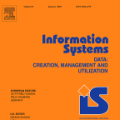Applying Design Science Research (DSR) methodology is becoming a popular working resource for most Information Systems (IS) and Software engineering studies. The research and/or practical design problems that must be faced aim to answer the question of how to create or investigate an artifact in a given context. Precisely characterizing both artifact and context is essential for effective research development. While various design science guidelines and frameworks have been created by experts in IS engineering, emerging researchers and postgraduate students still find it challenging to apply this research methodology correctly. There is limited literature and materials that guide and support teaching novice researchers about the types of artifacts that can be developed to address a particular problem and decision-making in DSR. To address this gap in DSR, in this chapter, we explore DSR from an educational perspective, explaining both the concept of DSR and an effective method for teaching it. This chapter includes examples of DSR, a teaching methodology, learning objectives, and recommendations. Moreover, we have created a survey artifact intended to gather data on the experiences of design science users. The goal is to discover insights into contemporary issues and needs for DSR best practices (and, in consequence, evaluate the methodology we aim to teach). Our survey results offer a comprehensive overview of participants' experiences with DSR in the SE and IS Engineering domain, highlighting broad engagement primarily initiated during PhD studies and driven by supervisory guidance and research problems. We finally disclose the artifact to the community so that it can be used by other educators as a preparation when planning to teach DSR in tune with the experiences of their target audience.
翻译:暂无翻译





